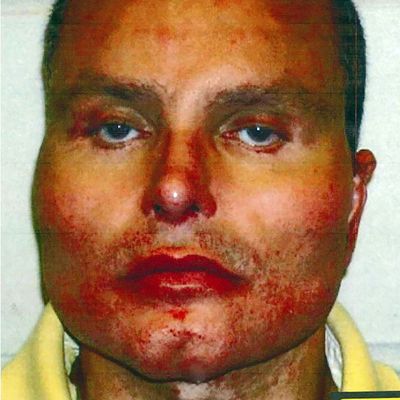
The prosecution of Joaquín Guzmán Loera, better known as El Chapo, currently underway at the Eastern District courthouse in Brooklyn, promised to be the Scopes trial of narco-trafficking. The U.S. Attorney’s office was selling Chapo, Mexican leader of the Sinaloa Cartel, as the biggest, baddest dope-pusher in the recorded history of the trade, at least back to the commanders of British warships during the Chinese opium wars of the 1840s.
Yet as America’s first great narco trial ground through its fourth week, it was apparent that something was missing. It wasn’t the lack of information. The government’s array of cooperating witnesses (they used to be called rats) have produced reams of testimony on Chapo’s Amazon Prime—like ability to flood the market with an unprecedented volume of addictive drugs. Chapter and verse was presented on the drug lord’s bribes to corrupt Mexican officials, including alleged payouts to two former presidents. Spates of killings were described, some in graphic detail. Still, the process was a drama without a center.
Part of the problem was the U.S. Attorney’s choice to try El Chapo as a traditional drug “kingpin,” as if moving the man they call “Shorty” off the board was going to somehow end the cartels and justify the untold billions the government has spent on the War on Drugs. It was a misconception of both time and scale. When Frank Lucas, the so-called “American Gangster,” was riding high in the early 1970s, his area of control consisted of a couple of blocks along 116th Street in Harlem. The territory wasn’t vast, but Lucas was the “kingpin” of it, just as other old-school dope-pushers like Nicky Barnes and Pappy Mason were the bosses of their slivers of sidewalk. Narcoland is another realm. It is a worldwide canvas, a realm where drugs are the ultimate globalized commodity, a decentralized zone where the nation-state and the cartel are often one in the same. It is a system that transcends its players. No one mortal man could be its “kingpin.”
This isn’t to say that El Chapo shouldn’t be on trial, or be sent to the Supermax prison in Florence, Colorado. The evidence was fairly clear on that. He’d been responsible, out of sheer machismo and greed, for the horrific cartel wars in both Tijuana and Juarez, turning both Mexican border towns (with a total population of 2.6 million) into terrains of fear and despair. He’d amassed an estimated $14 billion without ever paying an unlaundered cent to either the Mexican or American governments. In his numerous depictions in the popular culture, both in Netflix series and who knew how many Mexican telenovelas he was a ruthless kill-or-be-killed figure. The trouble for watchers of the first great American narco trial was that Chapo’s alleged immorality, his vicious disregard for the best of the human spirit, was not manifested in the Brooklyn courtroom.
It could have been the fact that the drug lord was being kept in lockup 23 hours a day, or whatever meds they had him on, or his lack of physical stature, but Chapo simply didn’t look all that scary sitting day after day at the table for the defense. He certainly didn’t appear to be the fearsome legend whose penchant for uncanny escape had caused the city to shut down the Brooklyn Bridge just to transport him across the East River. Possibly because of these overhyped exploits, in person, the Culiacán gangster seemed little more than a burnt 61-year-old shell of his former hell-raising self. You could see it his eyes — the resignation, the sense of defeat. Sitting at the defense table, the drug lord’s famous black-eyed Roberto Durán stare had dissolved to abject neediness as he stole glances at his faithful young wife, Emma Coronel Aispuro, sitting in the second row of the gallery.
In short, he brought no menace to the room. And if there was one thing any decent drug prosecution needed, it was a palpable sense of living, breathing malevolence — what most recognize as sheer evil.
The calculus would reconfigure with appearance of Juan Carlos Ramírez Abadía, the 55-year old Colombian-born narco known as El Chupeta.
A federal prisoner since 2008, El Chupeta — his nickname means “Lollipop” — first met El Chapo in a Mexico City hotel lobby during 1993. He was a major coke importer looking for someone capable of moving large quantities of product into the U.S. quickly, with the least amount of drama. Chapo, then known as El Rapido owing to his high-volume, high-efficiency business model, was Ramirez’s man. It was one of most lucrative dope-distribution deals in history, raking in billions in yearly profits. But this history was the least of what El Chupeta brought to the current case.
It was the face that you noticed first, the result of four separate rounds of plastic surgery the former leader of Columbia’s Norte del Valle Cartel underwent while on the run in Brazil during the late 1990s. “I had changes done,” Chupeta said as he sat in the witness chair wearing a shiny black ski jacket with the collar rolled up, fleece gloves on his hands. “I altered the physical appearance of my jawbone, my cheekbones, my eyes, my mouth, my ears, and my nose.” If Jocelyn Wildenstein, the famous Catwoman of tabloid sensation, undertook rigorous elective facial surgery to bring out her feline nature, El Chupeta went for something darker. He’d transformed himself into Nosferatu.
The surgeries were the end product of years of peripatetic escapes on El Chupeta’s part. After years of success, the trafficker disappeared from Colombia when the government put a $5 million bounty on his head. He moved to the wild borderlands of then-Chavezista Venezuela. In addition to wrecking the petro economy, the leftist Venezuelan caudillo had tweaked the tail of American power by banishing the DEA, which made the country a narco paradise. During that time, El Chupeta allegedly entered into a dope-smuggling partnership with the FARC, or the Revolutionary Armed Forces of Colombia, the agrarian Marxist-Leninist group of brutalists seeking to overthrow the government of his home country. But then someone tried to collect the $5 million reward, and Ramirez was on the move again, relocating to Brazil, where he lived as a reclusive king, with thousands of bottles of wine in his cellar, a multimillion-dollar art collection, and personal zoo stocked with a lion, monkeys swinging from trees, and a flock of peacocks.
The government’s direct examination of El Chupeta had its highlights, notably his spooky Conradian tale of a shipment lost at sea. Speaking in his harsh, electronic-inflected voice, El Chupeta spoke of a ship captain who had dipped too deeply into his cargo. The man went crazy, the witness said. “He started to see ghosts. He though the American Coast Guard was everywhere,” and deliberately sank the boat along with 20,000 kilos of coke. Anxious to check on the fate of his product, El Chupeta requisitioned a helicopter owned by friendly elements of the Mexican federal police. He cared nothing for the ship, or the men that had gone down with it, only the cocaine. But he saw “nothing, only the sea. When I saw all that sea I became very sad.”
A richer picture of the demon within El Chupeta came to light during the defense cross-examination this past Tuesday morning. The defense doesn’t have all that much to work with. No one thinks they’re going to get El Chapo off. Their only hope is to beat the first count against their client, the continuing criminal enterprise RICO charge that will send Chapo to jail for life (until of course he flips on whomever else the government tries next). The best tactic is to make the cooperating witnesses look even worse than their fatally compromised client.
The cross-examination was handled by William Purpura, who at 66 is the senior member of El Chapo’s estimated $5 million defense team that also includes Jeffrey Lichtman and A. Eduardo Balarezo, former counsel to Arturo Beltrán Leyva, a former Chapo cartel ally turned enemy. Previously, Purpura’s crosses had been a mixed bag. He was a shine-headed pit bull of the team, always on the attack, sometimes excessively so. But with El Chupeta, the man that trial wags joked spent his off-hours wrapped in leathery wings upside down in his cell like a bat, the Jersey-born Purpura found the proper tone.
When you’ve got the devil on the stand, you’re not going to outsmart him. The best thing you can do is keep him talking, listen closely, study the methodology. This Purpura did. He asked about the people Chupeta had ordered dead, including the one he shot in face at point-blank range. Was this all true? “Correcto!” El Chupeta answered, over and over, with the defiance of the wholly unashamed.
Purpura moved to one of the trial’s outstanding bits of evidence, El Chupeta’s ledger, his accounts of seemingly every transaction the narco engaged in over his mendacious career. There was an OCD compulsion about the account’s accuracy. Purpura asked El Chupeta how much he paid to assassinate a particular group of enemies; he knew the more than 20-year-old figure from memory, down to the last dollar: $338,776.
Later Purpura asked El Chupeta about his nickname, “Lollipop,” a sardonic reference to a poison candy to be sucked on at your own risk. Like a wiseacre street guy, Purpura asked, “You mean like a pacifier?”
It was a diss, an open challenge to which El Chupeta reacted in an unexpected way. He smiled, his lips spreading over his pointed chin, lifting the angle of his tubular cheek bones. For an instant it appeared that the Lollipop’s face might break wide open, revealing whatever darkness lurked beneath. Then a kind of guttural noise came forth, something of delighted giggle. It was a moment of victory for a street lawyer pleading his sure loser of a case. He’d made the devil laugh.





























